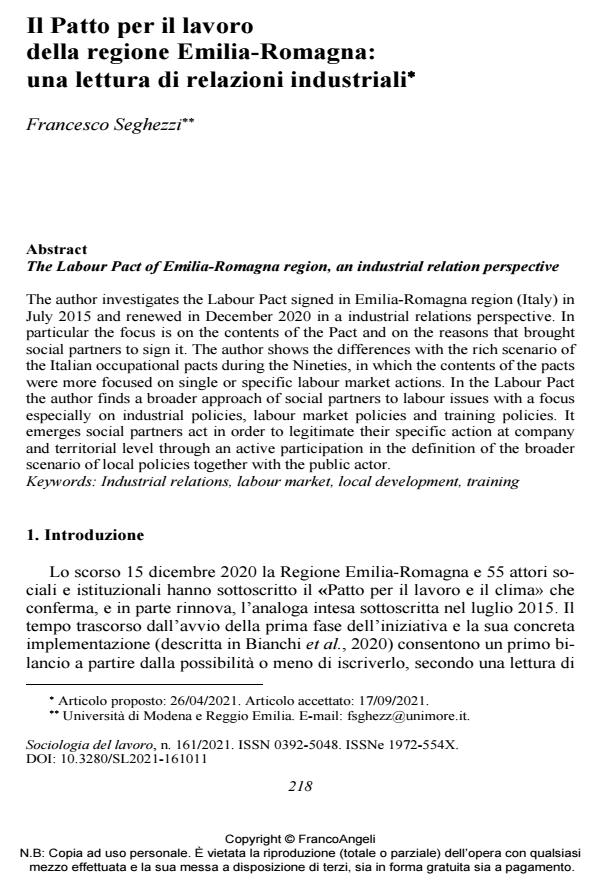The Labour Pact of Emilia-Romagna region, an industrial relation perspective
Journal title SOCIOLOGIA DEL LAVORO
Author/s Francesco Seghezzi
Publishing Year 2021 Issue 2021/161
Language Italian Pages 18 P. 218-235 File size 206 KB
DOI 10.3280/SL2021-161011
DOI is like a bar code for intellectual property: to have more infomation
click here
Below, you can see the article first page
If you want to buy this article in PDF format, you can do it, following the instructions to buy download credits

FrancoAngeli is member of Publishers International Linking Association, Inc (PILA), a not-for-profit association which run the CrossRef service enabling links to and from online scholarly content.
The author investigates the Labour Pact signed in Emilia-Romagna region (Italy) in July 2015 and renewed in December 2020 in a industrial relations perspective. In particular the focus is on the contents of the Pact and on the reasons that brought social partners to sign it. The author shows the differences with the rich scenario of the Italian occupational pacts during the Nineties, in which the con-tents of the pacts were more focused on single or specific labour market actions. In the Labour Pact the author finds a broader approach of social partners to labour issues with a focus especially on industrial policies, labour market policies and training policies. It emerges social partners act in order to legitimate their specific action at company and territorial level through an active participation in the defi-nition of the broader scenario of local policies together with the public actor.
Keywords: Industrial relations, labour market, local development, training
- Come si governa il cambiamento? Un'analisi dei dispositivi di attuazione delle politiche regionali: il caso della formazione professionale in emilia-romagna Eleonora Costantini, in ECONOMIA E SOCIETÀ REGIONALE 2/2022 pp.89
DOI: 10.3280/ES2022-002008
Francesco Seghezzi, Il Patto per il lavoro della regione Emilia-Romagna: una lettura di relazioni industriali in "SOCIOLOGIA DEL LAVORO " 161/2021, pp 218-235, DOI: 10.3280/SL2021-161011